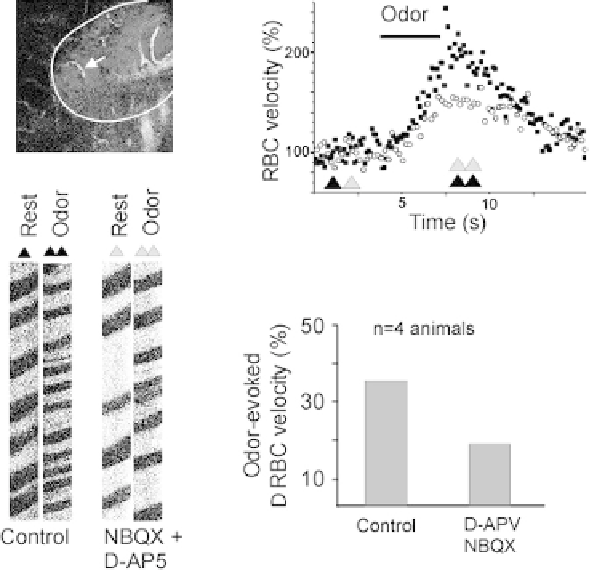Biomedical Engineering Reference
In-Depth Information
applications of NBQX
DAP5 or tetrotoxin) did not block and
even did not affect vascular responses even though local neuronal
responses were abolished . This implies that in our experimental
conditions, more than one glomerulus are usually activated by the
odor. Silencing the recorded glomerulus does not affect a vascular
response involving several clustered glomeruli.
+
7. Vascular
Responses
Require
Postsynaptic
Activation of
Glomerular
Neurons
The difficulty to activate a single glomerulus precludes the use
of intraglomerular pharmacology to assert or exclude the role of
postsynaptic activation in the generation of vascular responses.
What is necessary is to block glutamatergic synaptic transmission
in all glomeruli from the rat dorsal olfactory bulb. We recently
superfused glutamate antagonists onto the bulb surface, i.e. omit-
ting the application of agar while imaging blood flow. Imaging
blood flow requires brain movements inferior to 1-2
m and we
obtained stable measurements of RBC flow in only 1/3 experi-
ments. High concentrations of NBQX and D-AP5 decreased both
neuronal and vascular responses by about 40 % (
Fig. 4.3
).
μ
Fig. 4.3. Superfusion
of
glutamate
antagonists
decreases
odor-evoked
vascular
responses (rat, top left, the arrow points to the recorded capillary).

